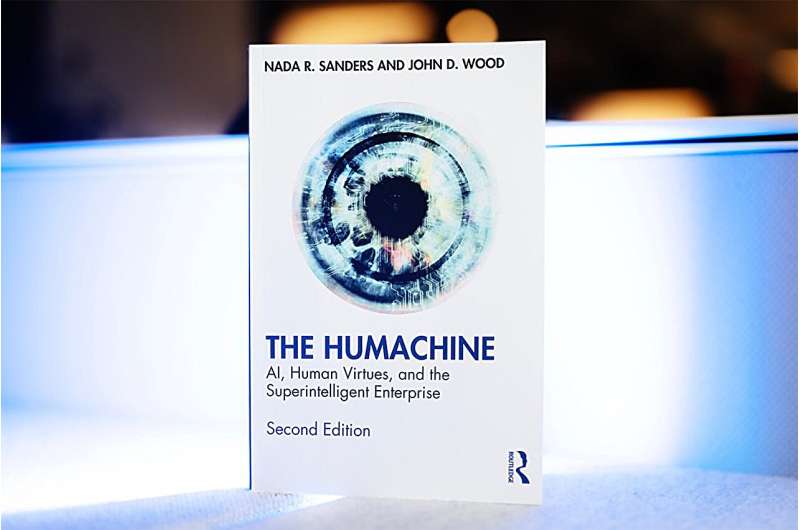This article has been reviewed according to Science X's editorial process and policies. Editors have highlighted the following attributes while ensuring the content's credibility:
fact-checked
trusted source
proofread
How can humans and machines work in harmony? Through collaboration, says supply chain expert

There's a quote Nada Sanders, a Northeastern distinguished professor of supply chain management, likes to share when discussing the collision of artificial intelligence and enterprise.
It's from a conversation she had with Spencer Fung, a member of the university's Board of Trustees and the group executive chairman of the supply chain management company Li & Fung Limited.
"If a company doesn't rethink their business model and just adds digital on top of it, it's kind of like adding digital on top of a horse and buggy—while your competitors are building a digital car."
And in rethinking that model, it's essential that humans are not replaced as part of this technological reshuffling, but are instead at the center of it, she explains.
That's the premise of Sanders' book, "The Humachine: AI, Human Virtues, and the Superintelligent Enterprise," which she co-authored with John D. Wood, an attorney and educator based in New York City.
Fung is one of many executives Sanders interviewed for the second edition, which was recently released.
The first edition was published in December 2019, months before the world was forced to shut down as the COVID-19 pandemic took hold. The premise was to understand how technology was reshaping the business world. One of the key takeaways was that the most sustainable model of innovation was for humans and machines to work together in harmony.
For the second edition, the writers put that insight to the test and interviewed executives from top companies to see how they fared during the pandemic—when automation demands rose and corporate workflows were in flux.
And it looks like companies are doubling down on the ingenuity of the human worker even amid the "post-pandemic AI rush" the business world finds itself in, Sanders explains.
"In 2019, we were surprised that these companies were all talking about people," Sanders says. "Now, fast forward to 2023, and whoa, it's people on steroids."
That is the idea behind "the Humachine," a concept Wood and Sanders define in the book as the marriage between human worker and machine.
Humans are creative, intuitive and compassionate. Machines are precise, process large amounts of data at once and can scale quickly, Sanders and Cook highlight in the book.
"In this book, we are interested in exploring combining human and machine virtues at the enterprise level—an organization, company, corporation, or other kind of organized undertaking," they write.
The concept builds off the "humanics" framework Northeastern President Joseph E. Aoun defines in his book, "Robot-Proof: Higher Education in the Age of Artificial Intelligence." Humanics is an education model that merges technological, data and human literacy.
In Sanders' interviews with executives and chief AI experts including Usama Fayyad, executive director of Northeastern's Institute for Experiential AI, it all came down to leveraging those domains.
"It's a whole new set of literacies that allow us to work with our technology but also work with humans creatively," she says. "Basically, it's the skills you need to be the human in the loop."
The pandemic caused global instability, Sanders explains, and the business world was certainly not immune.
Every day during the pandemic brought new unforeseen challenges that were hard for business owners to predict and plan around.
With the worst of the pandemic hopefully behind them, businesses that weathered the storm had to adapt and think creatively, Sanders explained. Technology certainly helped many executives increase throughputs in their enterprises.
But technology alone only got them so far, Sanders explains.
"Those who survived, it wasn't just about acquiring technology or becoming digital," she says.
This story is republished courtesy of Northeastern Global News news.northeastern.edu.

















